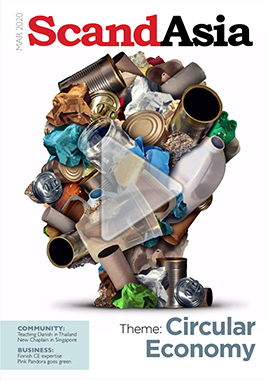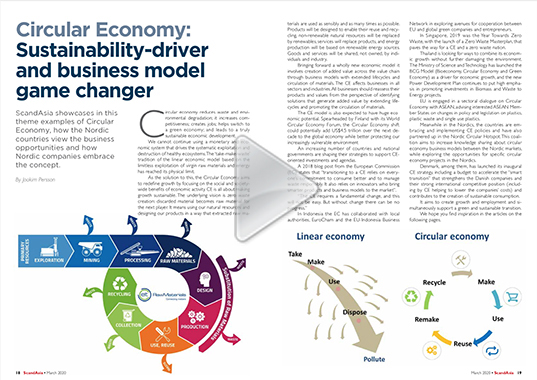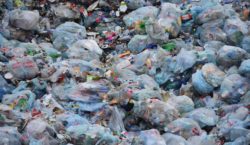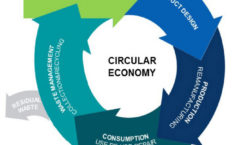ScandAsia showcases in this theme examples of Circular Economy, how the Nordic countries view the business opportunities and how Nordic companies embrace the concept.
By Joakim Persson
Circular economy reduces waste and environmental degradation; it increases competitiveness; creates jobs; helps switch to a green economy; and leads to a truly sustainable economic development.
We cannot continue using a monetary and economic system that drives the systematic exploitation and destruction of healthy ecosystems. The ‘take-make-waste’ tradition of the linear economic model based on the limitless exploitation of virgin raw materials and energy has reached its physical limit.
As the solution to this, the Circular Economy aims to redefine growth by focusing on the social and society-wide benefits of economic activity. CE is all about making growth sustainable. The underlying vision is zero waste creation: discarded material becomes raw material for the next player. It means using our natural resources and designing our products in a way that extracted raw materials are used as sensibly and as many times as possible. Products will be designed to enable their reuse and recycling, non-renewable natural resources will be replaced by renewables, services will replace products, and energy production will be based on renewable energy sources. Goods and services will be shared, not owned, by individuals and industry.
 Bringing forward a wholly new economic model it involves creation of added value across the value chain through business models with extended lifecycles and circulation of materials. The CE affects businesses in all sectors and industries. All businesses should reassess their products and values from the perspective of identifying solutions that generate added value by extending lifecycles and promoting the circulation of materials.
Bringing forward a wholly new economic model it involves creation of added value across the value chain through business models with extended lifecycles and circulation of materials. The CE affects businesses in all sectors and industries. All businesses should reassess their products and values from the perspective of identifying solutions that generate added value by extending lifecycles and promoting the circulation of materials.
The CE model is also expected to have huge economic potential. Spearheaded by Finland with its World Circular Economy Forum, the Circular Economy shift could potentially add US$4.5 trillion over the next decade to the global economy while better protecting our increasingly vulnerable environment
An increasing number of countries and national governments are shaping their strategies to support CE-oriented investments and agendas.
A 2018 blog post from the European Commission (EC) states that “transitioning to a CE relies on everyone’s commitment to consume better and to manage waste responsibly. It also relies on innovators who bring smarter products and business models to the market”.
“The CE requires a fundamental change, and this will not be easy. But without change there can be no progress.”
In Indonesia the EC has collaborated with local authorities, EuroCham and the EU-Indonesia Business Network in exploring avenues for cooperation between EU and global green companies and entrepreneurs.
In Singapore, 2019 was the Year Towards Zero Waste, with the launch of a Zero Waste Masterplan, that paves the way for a CE and a zero waste nation.
Thailand is looking for ways to combine its economic growth without further damaging the environment. The Ministry of Science and Technology has launched the BCG Model (Bioeconomy, Circular Economy and Green Economy) as a driver for economic growth, and the new Power Development Plan continues to put high emphasis in promoting investments in Biomass and Waste to Energy projects.
EU is engaged in a sectoral dialogue on Circular Economy with ASEAN, advising interested ASEAN Member States on changes in policy and legislation on plastics, plastic waste and single use plastics.
Meanwhile in the Nordics, the countries are embracing and implementing CE policies and have also partnered up in the Nordic Circular Hotspot. This coalition aims to increase knowledge sharing about circular economy business models between the Nordic markets, while exploring the opportunities for specific circular economy projects in the Nordics.
Denmark, among them, has launched its inaugural CE strategy, including a budget to accelerate the “smart transition” that strengthens the Danish companies and their strong international competitive position (including by CE helping to lower the companies’ costs) and contributes to the creation of sustainable consumption.
It aims to create growth and employment and simultaneously support a green and sustainable transition.
We hope you find inspiration in the articles on the following pages.






